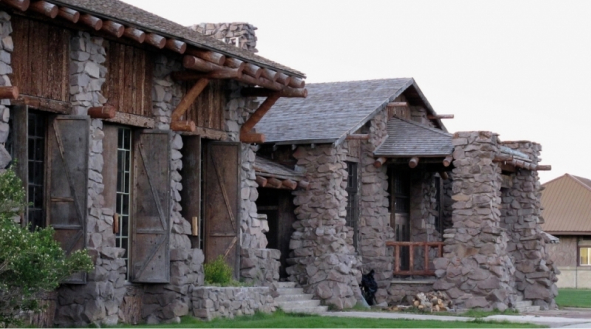Here are a few of the most renowned wildlife species, the best locations and seasons for viewing them, and a few safety tips.
As cheesy as it sounds the Grizzly and Wolf Discovery Center in West Yellowstone has one of the best exhibits around. View grizzlies and wolves, that for some reason or another cannot be reintroduced to the wild, as they feed, sleep, and roam their close-to-natural setting.
But hands down, the best way to view and learn about wildlife within Yellowstone National Park is to join a wildlife tour of the park.
Yellowstone Wildlife
Wolves
In 1994 there was not a single wolf in Yellowstone National Park so the park service began a reintroduction program of gray wolves in 1995 and 1996. Today there are roughly 100 wolves that roam the park and most are known by name to wildlife fanatics. Wolves are most commonly spotted in the winter and within the Lamar Valley corridor, between Tower Roosevelt and Cooke City, Montana.
Grizzly Bears
Few Yellowstone visitors are lucky enough to encounter or even spot a grizzly bear in the wild. Grizzlies tend to avoid roads and populated areas. The best time for viewing grizzlies is in the late spring, specifically May and June. In the late summer, grizzlies frequent the Canyon and Mount Washburn area. There are currently about 400-600 grizzlies that inhabit the park.
Black Bears
Black bears are more commonly spotted within Yellowstone. They are generally smaller and less aggressive that a grizzly bear. Black bears, although often brown in color, are known for being great food scavangers and are often shewed out of campgrounds and populated areas.
Bison
Surprising to most, the bison is one of the more dangerous animals in the park. They are unpredictable and stories of gorings tend to frequent local news headlines. Bison wander all over the park and can be viewed all year long. Hayden Valley is particularly popular for viewing bison, especially in July and August.
Elk
Elk are the most easily spotted animal in Yellowstone and after you've seen them roaming the grounds at Mammoth Hot Spring, they might almost become common enough that they are less exciting. That is, until you witness two bull elk fighting during mating season. During the month of September, elk can be heard bugling (a high pitched whistle that acts as their mating call). Elk hotspots include Norris, Madison, and Mammoth.
So many more ...
There are so many species of wildlife in Yellowstone that it would take forever to list and describe them all here. Others that you might spot include moose, bald eagles, coyotes, antelope, big horn sheep, fox, and more.
Wildlife Hotspots
The most popular viewing grounds for bison, grizzlies, and wolves, a guided wildlife tour would be incomplete without a stop in the Lamar Valley.
Drive along the Northeast Entrance road and it's common to spot hoards of people pulled to the side with chairs and spotting scopes, looking like they will be camped out for days to come. There's a reason they are all there.
The Yellowstone River flows through some of the most beautiful settings in the park. Keep watch in it's glistening waters for the colorful cutthroat trout. Along it's banks, primarily in Hayden Valley, bison and grizzly bear roam the nearby grasslands, especially at dawn and dusk.
One of the busiest places in the park is also one of the best for viewing elk. Just stroll around the Mammoth Visitor Center and you are sure to spot these creatures bedded down by a tree or nibbling the finely trimmed lawns.
Best Viewing Seasons
Spring and fall are the best times for viewing wildlife. Summer crowds tend to push animals further away from populated areas. Come September and October, you'll have the vast valleys to yourself, against the melodic backdrop of the elk rut. In the winter, animals heat to lower regions, especially near geyser basins where it is slightly warmer. In April and May, keep watch for the youngsters, including baby bison and elk, as well as grizzlies that have just awoken from a long winter nap.
Staying Safe
- Never approach wildlife, no matter how tame they may seem. Bison can outrun humans and are very unpredictable.
- Always store food and garbage in bear proof containers, boxes, or inside vehicles.
- Never feed wildlife. A fed bear is a dead bear.
- Carry bear spray if you go for a hike.













